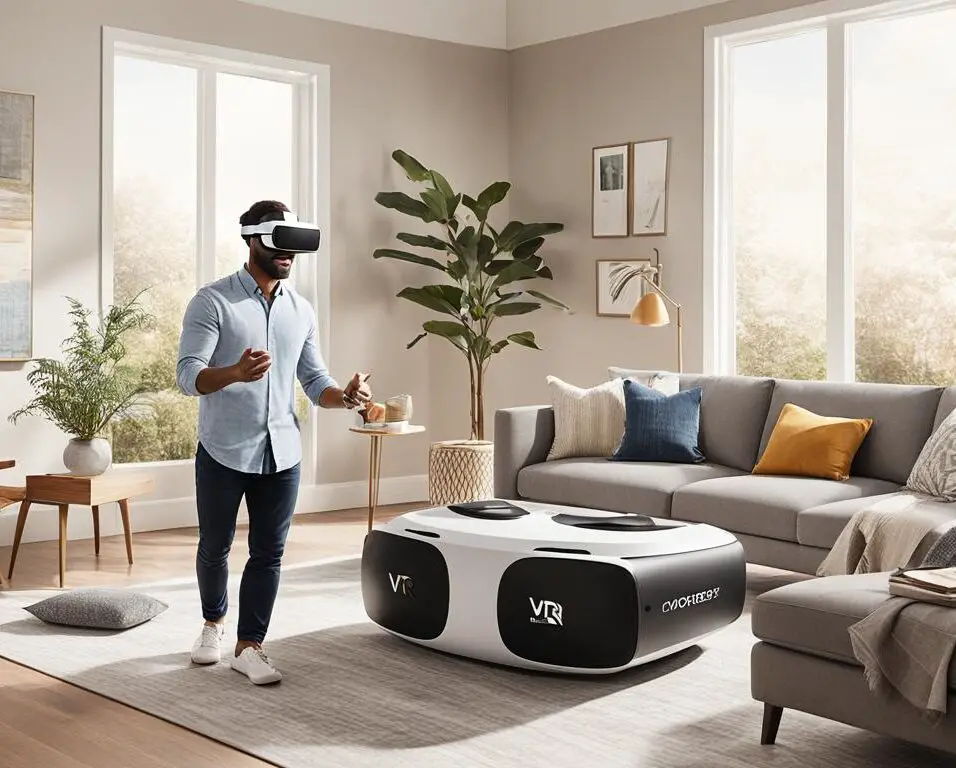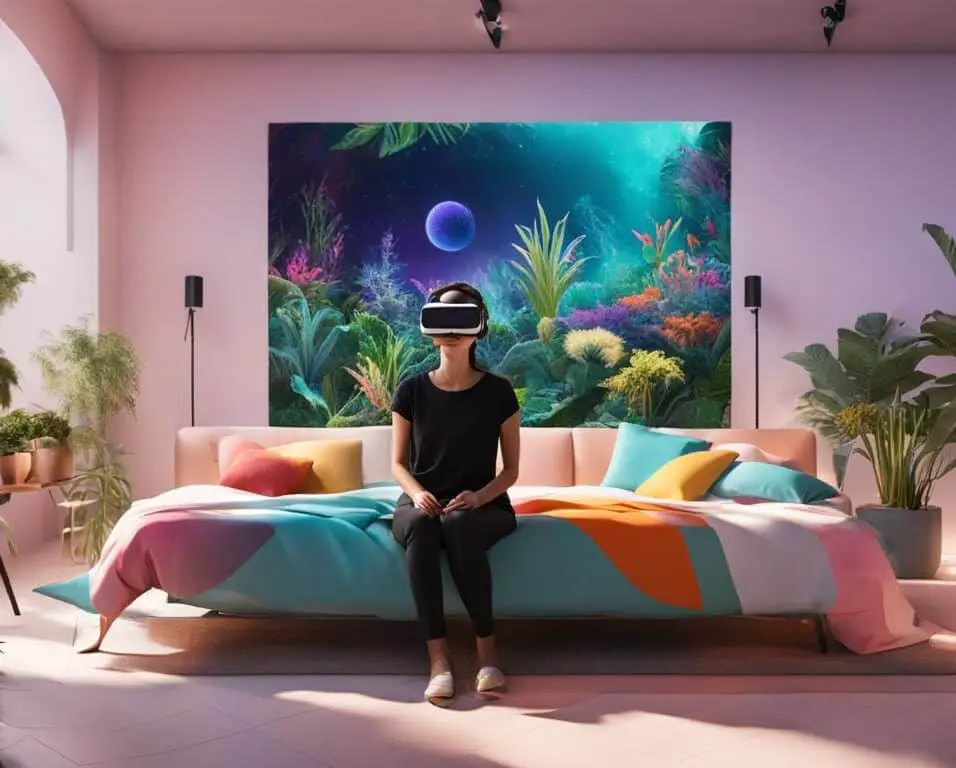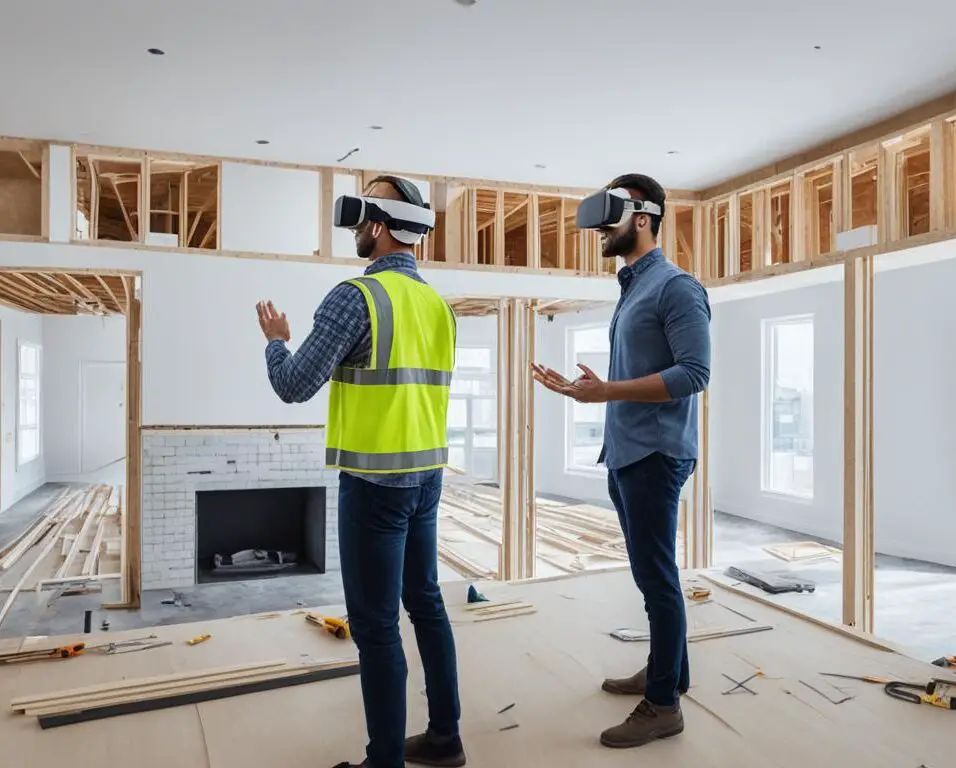Tailored Spaces: VR for Custom Home Building Plans
Virtual reality (VR) is revolutionizing the design process for custom home building plans. With VR technology, homeowners can now visualize and customize their dream homes before they are even built. This immersive and interactive experience empowers homeowners to make informed decisions about their home design, reshaping the way architects, designers, and clients collaborate.
By utilizing VR, the custom home building industry is able to offer a more efficient and personalized experience. Homeowners can explore every detail of their future home, from the layout and interior design to the materials and finishes. This level of customization ensures that the final result truly reflects the homeowner’s vision and preferences.
The ability to visualize and interact with a virtual representation of their dream home provides homeowners with a unique sense of control and confidence in their decision-making. They can experiment with different design options, explore various layouts, and even preview the natural lighting and spatial dynamics of their home.
VR not only enhances the client’s experience but also streamlines the design process for architects and designers. They can easily communicate design concepts and iterate on ideas by presenting virtual walkthroughs to clients. This collaborative process allows for quicker decision-making, efficient revisions, and ultimately, a smoother overall construction process.
Key Takeaways:
- Virtual reality (VR) is revolutionizing the custom home building industry by revolutionizing the design process.
- Homeowners can visualize and customize their dream homes before they are built, empowering them to make informed decisions.
- VR enhances collaboration between architects, designers, and clients, streamlining the design and construction process.
- Through VR, homeowners can explore every detail of their future home, optimizing the layout, materials, and finishes.
- The use of VR in custom home building ensures a more personalized and efficient building experience for all parties involved.
Personalized Learning Experiences Enhance Education
EdTech startups are leveraging AI and machine learning algorithms to create personalized learning experiences for students. These technologies analyze a learner’s performance and adapt the curriculum to their learning speed, style, and interests. The shift towards personalized learning has shown promising results in improving student engagement and outcomes. By tailoring education to individual students, EdTech is reshaping the traditional classroom and providing a more effective and engaging learning environment.
Customized Learning Pathways
One of the key benefits of personalized learning is its ability to provide customized learning pathways for each student. Using AI and machine learning, EdTech platforms can gather data on a student’s strengths, weaknesses, and preferences, allowing for the creation of personalized learning plans. These plans outline the specific topics, activities, and resources that align with an individual student’s needs, maximizing their learning potential.
Personalized learning offers customized learning experiences tailored to the unique needs of each student.
Enhanced Student Engagement
Personalized learning strategies foster increased student engagement by making the learning process more relevant and meaningful to each individual. By incorporating students’ interests and aspirations into the curriculum, EdTech platforms capture their attention and motivation. This personalized approach encourages active participation, collaboration, and critical thinking, resulting in deeper learning experiences.
The personalized nature of the learning experience increases student engagement, leading to improved academic performance and increased motivation to learn.
Improved Learning Outcomes
Research has consistently shown that personalized learning leads to improved learning outcomes. By tailoring instruction to individual students’ needs and preferences, EdTech platforms can address any gaps in knowledge, provide additional support, and offer challenging opportunities for growth. This targeted approach helps students achieve mastery in their areas of study, leading to higher retention rates and overall academic success.
Personalized learning has been proven to enhance student achievement and promote a deeper understanding of subject matter.
Impact of Personalized Learning on Education
| Benefits of Personalized Learning | Statistics/Evidence |
|---|---|
| Higher student engagement | Studies show that personalized learning increases student engagement, leading to improved academic performance and motivation to learn. |
| Better academic outcomes | Research indicates that personalized learning improves learning outcomes, with students achieving higher mastery of subject matter. |
| Increased student satisfaction | Students report higher satisfaction levels when their learning experiences are tailored to their individual needs and preferences. |
| Reduced achievement gaps | By targeting individual students’ learning needs, personalized learning has the potential to narrow the achievement gaps between students of different backgrounds. |
Gamification of Learning Makes Education More Engaging
The integration of gamification in education has become increasingly popular. EdTech startups are incorporating game design elements into learning environments to make education more interactive and enjoyable for students. By turning learning into a game-like experience, gamification increases student engagement and retention rates. Through gamified learning experiences, students can enhance their problem-solving skills, critical thinking abilities, and creativity in a fun and engaging way.
Research has shown that gamification in education can significantly improve student motivation and learning outcomes. When students are actively involved in interactive learning activities, they become more invested in the educational process, leading to higher levels of engagement. Gamified learning experiences provide immediate feedback, rewards, and challenges, creating a sense of achievement and motivation to progress further.
Gamification taps into the natural human inclination for competition, achievement, and rewards, leveraging these elements to drive student motivation and participation in the learning process.
By incorporating elements such as leaderboards, badges, and points systems, gamification transforms traditional classrooms into dynamic and immersive environments. This approach promotes healthy competition and collaboration among students, encouraging them to strive for excellence and interact with course materials in a more meaningful way.
Benefits of Gamification in Education:
- Increased student engagement and motivation
- Higher retention rates and improved learning outcomes
- Enhanced problem-solving and critical thinking skills
- Development of creativity and innovation
- Opportunities for real-time feedback and personalized learning
By integrating gaming elements into the learning process, educators can harness the power of gamification to create highly engaging and effective educational experiences. Whether it’s through online platforms, mobile applications, or classroom activities, gamified learning offers a unique approach to education that captures students’ attention and fosters a love for lifelong learning.
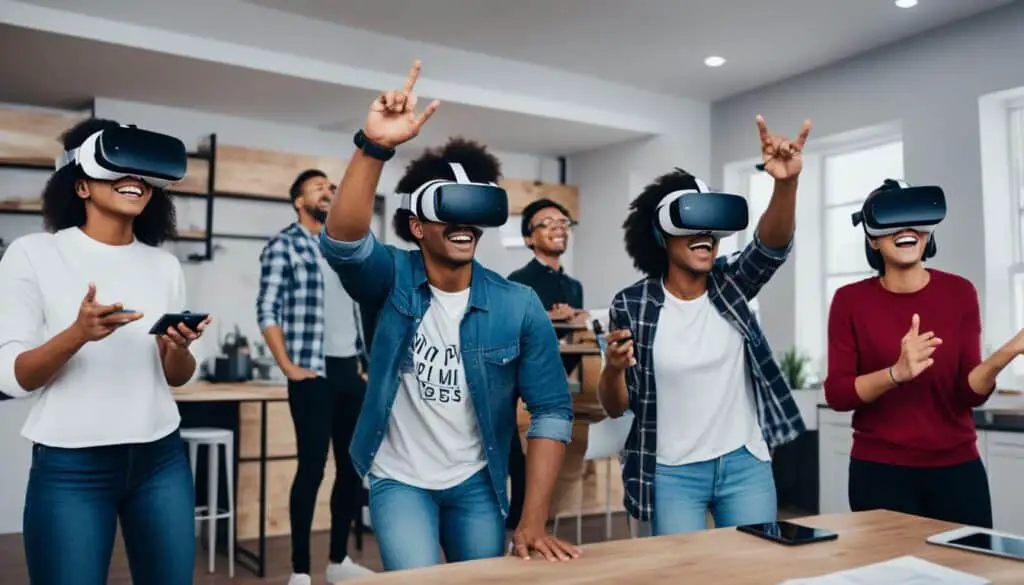
Immersive Technologies Transform Education
Immersive technologies such as virtual reality (VR) and augmented reality (AR) are revolutionizing the way students learn and engage with educational content. By providing interactive and immersive learning experiences, VR and AR offer unique opportunities for students to explore complex concepts and enhance their understanding.
One of the remarkable applications of VR and AR in education is seen in the medical field. Medical students can now perform virtual surgeries, allowing them to gain hands-on experience and develop their skills in a safe and controlled environment. These realistic simulations provide a valuable training tool and eliminate the risks associated with real-life operations.
Imagine a student studying the solar system. Instead of simply reading about it or looking at static images, VR technology can transport them to outer space, allowing them to explore the planets, experience zero gravity, and witness celestial events firsthand. This immersive experience sparks curiosity and makes learning more engaging and memorable.
“The integration of VR and AR in education enhances students’ ability to grasp abstract concepts and fosters their curiosity and enthusiasm for learning.” – Dr. Emily Carter, Education Specialist
.
In addition to enhancing the learning experience, immersive technologies promote interactive education. Students can actively participate and manipulate virtual objects, conduct simulations, and solve problems in a more dynamic and engaging way. This hands-on approach not only deepens their understanding but also cultivates critical thinking and problem-solving skills.
Benefits of Immersive Technologies in Education
- Enhanced understanding of complex concepts through interactive and immersive learning experiences
- Safe and realistic simulations for practical training in fields such as medicine and engineering
- Promotion of active learning and student engagement
- Development of critical thinking and problem-solving skills
- Increased motivation and curiosity through immersive and captivating educational content
The integration of VR and AR in education is transforming classrooms and paving the way for the future of learning. As technology continues to advance, immersive technologies will play an increasingly vital role in providing interactive and personalized education experiences for students of all ages.
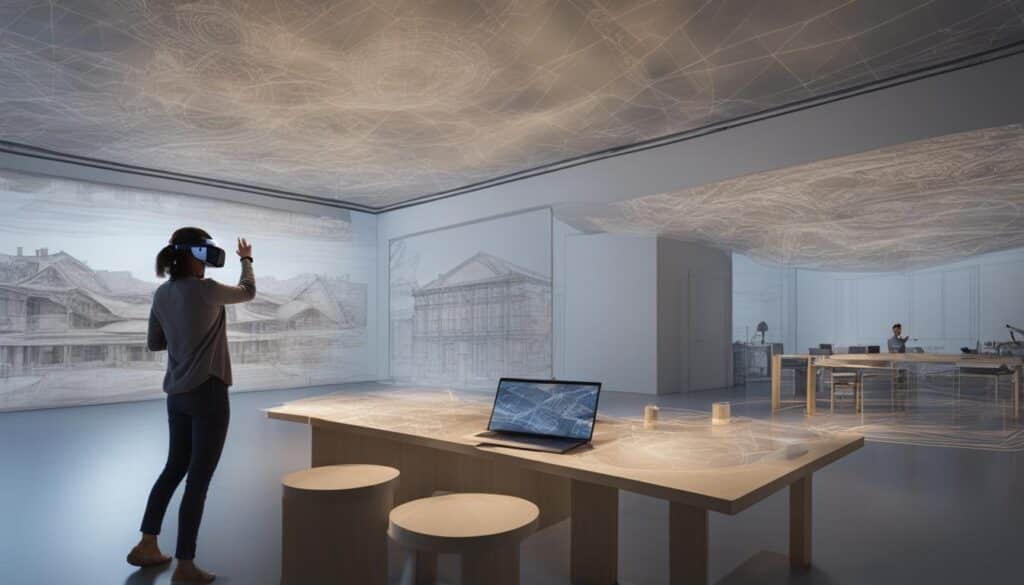
| Immersive Technologies | Benefits in Education |
|---|---|
| Virtual Reality (VR) |
|
| Augmented Reality (AR) |
|
Increased Access to Education through EdTech
EdTech startups are revolutionizing the education landscape by providing increased accessibility to high-quality education through online learning platforms and Massive Open Online Courses (MOOCs). These innovative digital platforms have broken down geographical and socio-economic barriers, making education more inclusive and accessible to all.
With online learning platforms, individuals can now access educational resources and courses from anywhere in the world. This flexibility allows for lifelong learning and professional development, empowering individuals to enhance their skills and knowledge at their own pace.
By democratizing education, EdTech is ensuring that everyone, regardless of their background or location, has the opportunity to pursue their educational goals. This accessibility is breaking barriers and leveling the playing field, creating a more equitable society where education is a fundamental right.
FAQ
How does virtual reality revolutionize the custom home building design process?
Virtual reality technology allows homeowners to visualize and customize their dream homes before they are built, providing an immersive and interactive experience.
What role does AI play in personalized learning experiences?
AI and machine learning algorithms analyze a learner’s performance and adapt the curriculum to their learning speed, style, and interests, creating customized learning pathways for students.
How does gamification make education more engaging?
Incorporating game design elements into learning environments increases student engagement and retention rates by turning education into a fun and interactive experience.
How do immersive technologies enhance education?
Virtual reality and augmented reality enable students to explore complex concepts through interactive and immersive learning experiences, offering hands-on learning and realistic simulations.
How does EdTech increase access to education?
Online learning platforms and MOOCs make high-quality education accessible to a larger population, breaking down geographical and socio-economic barriers.





